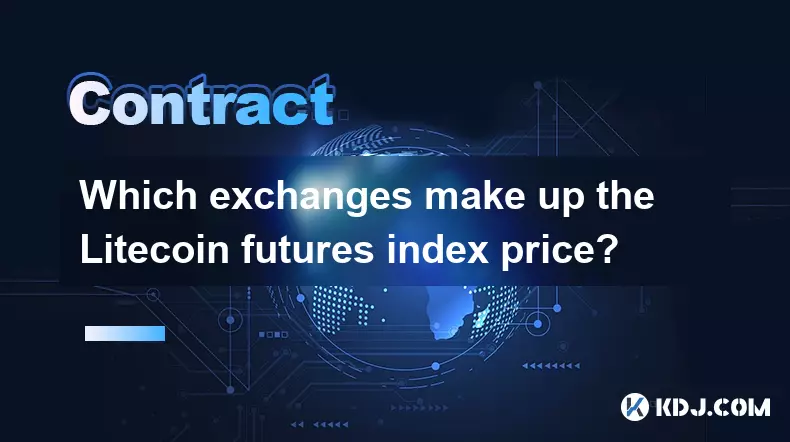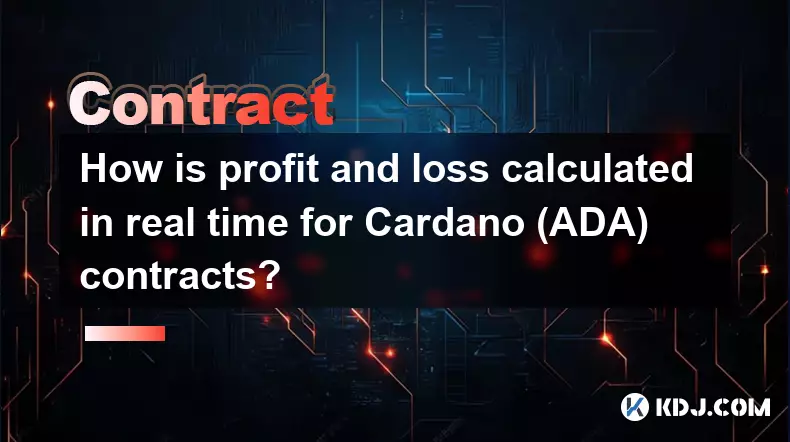-
 bitcoin
bitcoin $109667.069529 USD
-3.03% -
 ethereum
ethereum $3936.685804 USD
-4.07% -
 tether
tether $1.000493 USD
0.01% -
 xrp
xrp $2.771823 USD
-4.74% -
 bnb
bnb $957.805027 USD
-5.34% -
 solana
solana $196.735100 USD
-6.68% -
 usd-coin
usd-coin $0.999727 USD
-0.01% -
 dogecoin
dogecoin $0.227355 USD
-5.12% -
 tron
tron $0.335205 USD
-0.81% -
 cardano
cardano $0.779256 USD
-3.59% -
 ethena-usde
ethena-usde $0.999900 USD
-0.06% -
 hyperliquid
hyperliquid $42.492095 USD
-6.61% -
 chainlink
chainlink $20.501853 USD
-4.34% -
 avalanche
avalanche $28.952606 USD
-11.21% -
 stellar
stellar $0.356038 USD
-3.93%
Which exchanges make up the Litecoin futures index price?
The Litecoin futures index combines prices from top exchanges like Binance, OKX, and Bybit using a volume-weighted average to ensure accurate, manipulation-resistant benchmarking.
Sep 24, 2025 at 08:54 pm

Understanding the Litecoin Futures Index Price
1. The Litecoin futures index price is derived from a composite of major cryptocurrency exchanges that offer Litecoin futures contracts. These exchanges are selected based on trading volume, liquidity, and market reliability to ensure accurate pricing. The index serves as a benchmark for derivative products and helps prevent manipulation in futures markets.
2. Exchanges included in the index typically meet strict criteria such as regulatory compliance, transparent order books, and consistent trading activity. This ensures that the calculated index reflects genuine market sentiment rather than isolated anomalies or low-volume trades.
3. The index aggregates real-time futures prices across multiple platforms, applying a volume-weighted average to give more influence to exchanges with higher trading volumes. This method enhances the stability and credibility of the final index value.
4. Market participants such as traders, institutional investors, and algorithmic systems rely on this index for executing futures settlements, margin calculations, and risk management strategies. Its accuracy directly impacts positions held on leveraged trading platforms.
5. Transparency in the composition of the index is crucial. Reputable data providers regularly audit the contributing exchanges and update the list if necessary to reflect changes in market structure or exchange performance.
Key Exchanges in the Litecoin Futures Index
1. Binance is one of the primary contributors due to its high trading volume and global user base. It offers both quarterly and perpetual Litecoin futures contracts, making it a significant input for index calculations.
2. OKX plays a critical role with deep liquidity pools and advanced derivatives offerings. Its futures market for Litecoin consistently ranks among the most active, providing reliable price data for index aggregation.
3. Bybit contributes substantially through its popular perpetual contracts. The platform’s tight spreads and high open interest enhance the responsiveness of the index to real-time market movements.
4. Huobi (now HTX) remains part of the index despite reduced prominence in recent years. Its historical volume and continued presence in key regions support its inclusion in multi-exchange benchmarks.
5. Bitget has grown rapidly in derivatives trading and now features prominently in several index calculations. Its increasing share of Litecoin futures volume justifies its role in shaping the overall index price.
How Index Composition Affects Market Dynamics
1. When an exchange experiences downtime or abnormal price deviations, index providers may temporarily exclude it or adjust weighting to maintain integrity. This prevents flash crashes or pump-and-dump schemes from distorting settlement prices.
2. Changes in exchange rankings due to surges in trading activity can lead to dynamic rebalancing of the index components. For example, a sudden spike in futures volume on Kraken could prompt evaluation for inclusion if thresholds are met.
3. Regulatory actions against a specific exchange can result in its removal from the index. This occurred when certain Chinese-based platforms were phased out following policy shifts, leading to a recalibration of data sources.
4. Arbitrage opportunities emerge when individual exchange prices diverge significantly from the index. Traders exploit these gaps, which in turn helps align prices across platforms and reinforces index accuracy.
5. The dominance of a few large exchanges means their pricing behavior heavily influences the index. Monitoring their funding rates and open interest provides insight into broader market positioning tied to the index value.
Frequently Asked Questions
What happens if one of the index exchanges goes offline?If a contributing exchange becomes inaccessible, the index calculation adjusts by either using the last verified price or redistributing weight to other active exchanges. This minimizes disruption during technical outages while preserving continuity.
Are spot prices used in the Litecoin futures index?No, the futures index exclusively uses futures contract prices from designated exchanges. Spot prices may inform underlying market trends but are not factored into the official index used for derivatives settlement.
Can new exchanges be added to the index?Yes, exchanges can be added if they meet predefined standards for volume, security, and operational transparency. Inclusion requires review by the index administrator to ensure consistency and reliability of data inputs.
Who calculates and publishes the Litecoin futures index?Independent financial data firms and crypto-focused analytics platforms, such as CoinMarketCap, CoinGecko, or specialized derivatives infrastructure providers, calculate and disseminate the index in real time.
Disclaimer:info@kdj.com
The information provided is not trading advice. kdj.com does not assume any responsibility for any investments made based on the information provided in this article. Cryptocurrencies are highly volatile and it is highly recommended that you invest with caution after thorough research!
If you believe that the content used on this website infringes your copyright, please contact us immediately (info@kdj.com) and we will delete it promptly.
- Patience Pays: Web3, Pi Network, and the Future of Wealth
- 2025-09-26 23:05:12
- Beyond BNB Coin: Why Smart Money's Eyeing SHIB and Digitap ($TAP)
- 2025-09-26 23:25:12
- Tokenization Takes Flight: Securitize, Sei, and the RWA Revolution
- 2025-09-26 23:05:12
- Pi Network: Reshaping the World with Digital Currency?
- 2025-09-26 23:10:01
- Davis Commodities, ESG Tokens, and the Global South: A New Frontier?
- 2025-09-26 22:45:15
- Davis Commodities, AI Yield Engine, and Token Portfolio: Supercharging Commodity Finance
- 2025-09-26 22:45:15
Related knowledge

How do I enable the "scalping-only" mode for Cardano (ADA) contracts?
Sep 24,2025 at 03:19am
Understanding Scalping Strategies in Crypto Derivatives1. Scalping in cryptocurrency trading refers to executing multiple short-term trades within min...

What is the maximum position limit for Cardano (ADA) contracts?
Sep 23,2025 at 11:00pm
Understanding ADA Futures and Derivatives Market Structure1. Cardano (ADA) futures contracts are offered by several major cryptocurrency derivatives e...

What is the maker fee for Cardano (ADA) contracts?
Sep 26,2025 at 09:01am
Understanding Maker Fees in Cardano (ADA) Contracts1. The concept of maker fees applies broadly across decentralized exchanges and smart contract plat...

How can I view open interest in Cardano (ADA) contracts?
Sep 24,2025 at 07:36am
Understanding Open Interest in Cardano Derivatives1. Open interest refers to the total number of outstanding derivative contracts, such as futures or ...

What is the function of the insurance fund in Cardano (ADA) contracts?
Sep 24,2025 at 02:18am
Understanding the Role of Insurance Funds in Cardano Smart Contracts1. The insurance fund within Cardano's ecosystem is not a native feature directly ...

How is profit and loss calculated in real time for Cardano (ADA) contracts?
Sep 26,2025 at 04:18pm
Understanding Real-Time Profit and Loss in Cardano (ADA) Contracts1. Real-time profit and loss (P&L) calculations for Cardano-based smart contracts re...

How do I enable the "scalping-only" mode for Cardano (ADA) contracts?
Sep 24,2025 at 03:19am
Understanding Scalping Strategies in Crypto Derivatives1. Scalping in cryptocurrency trading refers to executing multiple short-term trades within min...

What is the maximum position limit for Cardano (ADA) contracts?
Sep 23,2025 at 11:00pm
Understanding ADA Futures and Derivatives Market Structure1. Cardano (ADA) futures contracts are offered by several major cryptocurrency derivatives e...

What is the maker fee for Cardano (ADA) contracts?
Sep 26,2025 at 09:01am
Understanding Maker Fees in Cardano (ADA) Contracts1. The concept of maker fees applies broadly across decentralized exchanges and smart contract plat...

How can I view open interest in Cardano (ADA) contracts?
Sep 24,2025 at 07:36am
Understanding Open Interest in Cardano Derivatives1. Open interest refers to the total number of outstanding derivative contracts, such as futures or ...

What is the function of the insurance fund in Cardano (ADA) contracts?
Sep 24,2025 at 02:18am
Understanding the Role of Insurance Funds in Cardano Smart Contracts1. The insurance fund within Cardano's ecosystem is not a native feature directly ...

How is profit and loss calculated in real time for Cardano (ADA) contracts?
Sep 26,2025 at 04:18pm
Understanding Real-Time Profit and Loss in Cardano (ADA) Contracts1. Real-time profit and loss (P&L) calculations for Cardano-based smart contracts re...
See all articles










































































